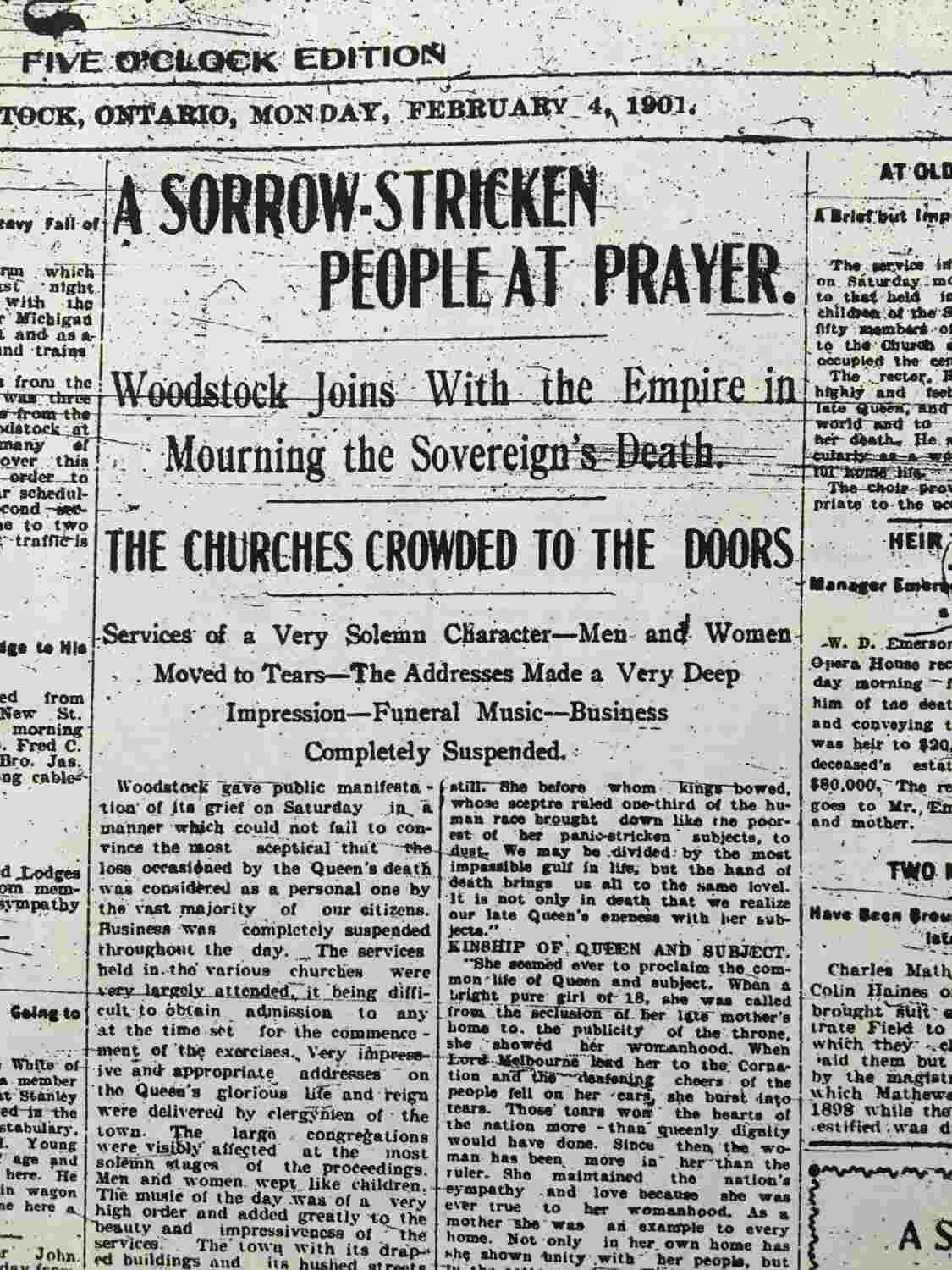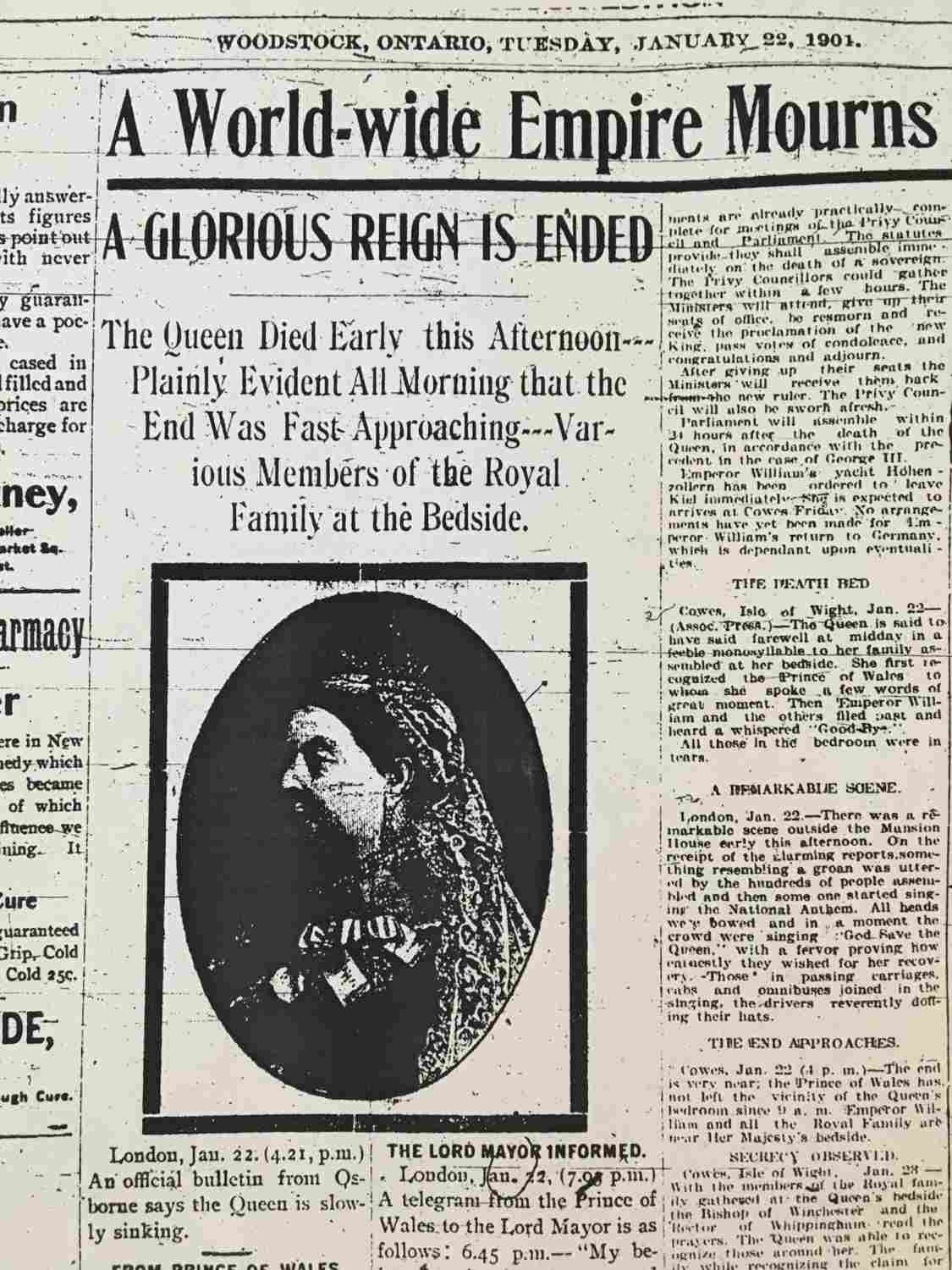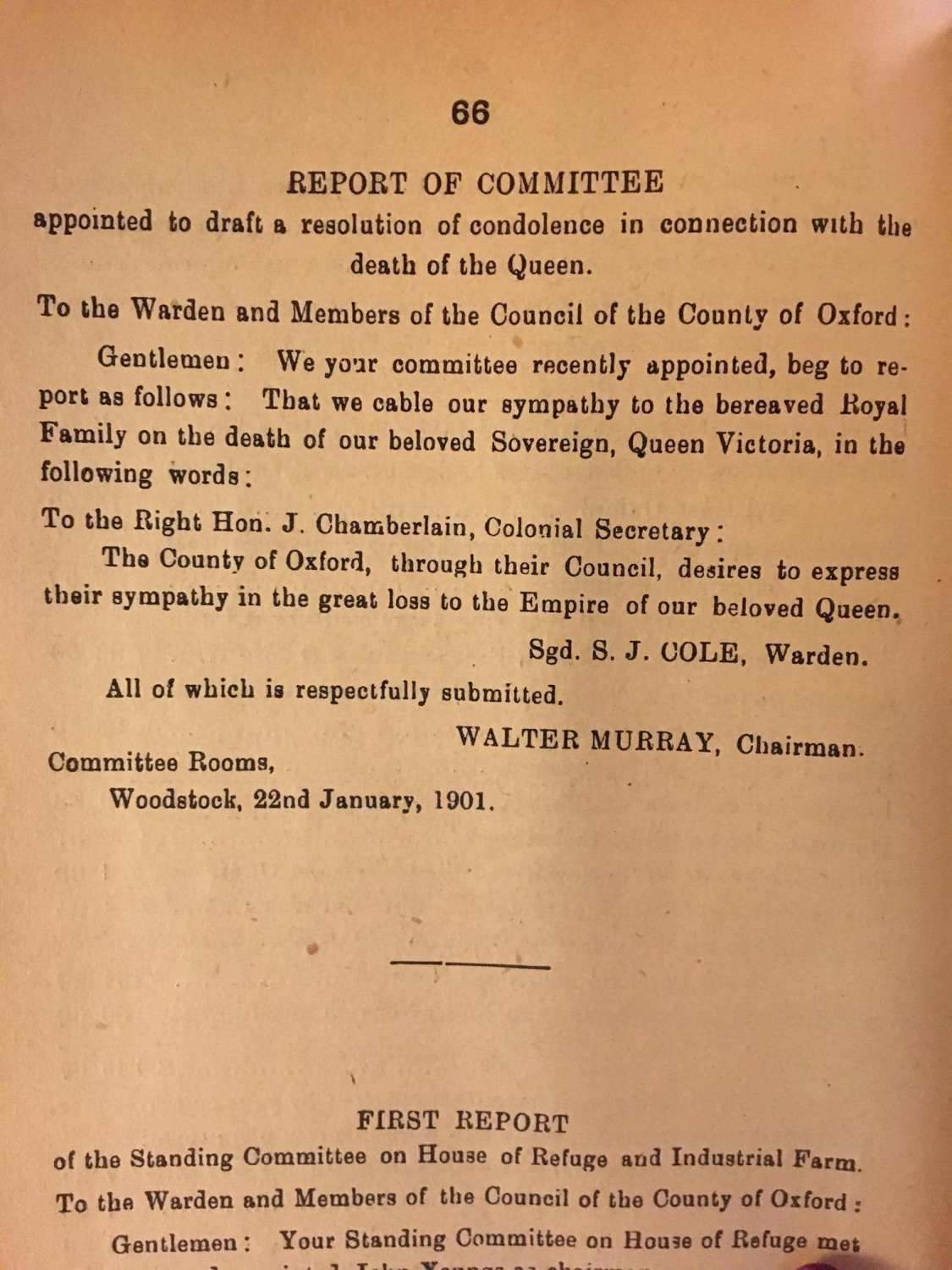Queen Victoria - 100 Years Since Her Reign
Queen Victoria - 100 Years Since Her Reign
120th anniversary of Queen Victoria's death.
By Liz Dommasch, County Archivist
Following the death of her Uncle, William IV, in 1837, Queen Victoria succeeded to the throne at the young age of 18. During her 64 year reign, Britain rose to become a leading world and economic power, thanks greatly to the impact of the Industrial Revolution in the country and its technological advancements in steam power, mining, engineering and the development of a vast railway network. It was also during this period that Britain would initiate a period of imperial expansion into Africa and the Middle East, in order to bolster the already vast British Empire that included India, Australia, N ew Zealand, and Canada.
ew Zealand, and Canada.
She was an ardent imperialist and took an active interest in her colonial subjects. In fact, Queen Victoria favoured Confederation and acted as a unifying influence for Canada’s provinces. Known as the “Mother of Confederation” she staunchly believed that Confederation would reduce defence costs and strengthen relations with the United States. In 1857, she selected Ottawa as the Province of Canada’s capital and then chose it again as the national capital for the Dominion in 1867 as it stood on the border between English and French Canada and was sheltered from potential American Invasions. Although she never visited Canada, her name has been given to numerous public buildings, streets, communities and physical features.
In her personal life, she would propose to her cousin, Prince Albert of Saxe-Coburg-Gotha in October 1839. Thoroughly in love, they married the following year on February 10th, 1840 at St. James’ Palace. Interestingly, on her wedding day, Queen Victoria wore a white satin and lace dress that started the fashion for white wedding dresses that continues to this day. They would have 9 children together: Victoria, Albert Edward (future King Edward VII), Alice, Alfred, Helena, Louise, Arthur, Leopold and Beatrice. Their public image conformed to the 19th century ideals  of domesticity; and images of Victoria, Albert and the children celebrating Christmas and vacationing together would influence broader parenting trends for years to come. Sadly, Prince Albert would pass away at Windsor Castle on December 14th, 1861. His death, deeply affected Victoria who began a decade long period of seclusion. Although she would begin to make public appearances once again in 1872, she would remain in mourning the rest of her life, wearing simple black dresses and white bonnets that led to her gaining the nickname: “the widow of Windsor”
of domesticity; and images of Victoria, Albert and the children celebrating Christmas and vacationing together would influence broader parenting trends for years to come. Sadly, Prince Albert would pass away at Windsor Castle on December 14th, 1861. His death, deeply affected Victoria who began a decade long period of seclusion. Although she would begin to make public appearances once again in 1872, she would remain in mourning the rest of her life, wearing simple black dresses and white bonnets that led to her gaining the nickname: “the widow of Windsor”
Queen Victoria would herself pass away on January 22nd 1901 at Osborne House, on the Isle Wright following the custom of spending Christmas there. Her son and successor, King Edward VII, as well as her eldest grandson, Emperor Wilhelm II, were at her deathbed. Newspaper reports at the time stated that before news of her death reached London, a large crowd of people had gathered outside of Mansion House and began to sing the National Anthem and “God Save the Queen” with “a fervor proving how earnestly they wished for her recovery.” (W-SR, January 22, 1901). Her funeral was held on February 2, 1901 and throughout the commonwealth, it was declared a day of mourning with numerous services being held on her behalf. Following her death, the Canadian government decided that Victoria Day, which had been celebrated as the Queen’s birthday in Canada, since 1845, would become a national holiday to honour her role in the country’s formation.
With a reign of 63 years, seven months and two days, Victoria was the longest-reigning British monarch until her great-great-granddaughter Elizabeth II surpassed her on September 9th 2015.

Oxford County Council report re: Queen Victoria's death.
